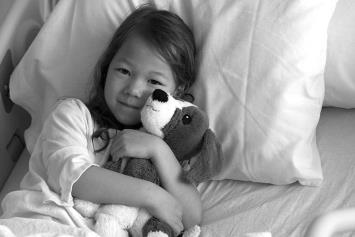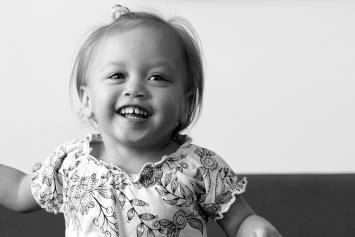Facial Paralysis
Facial paralysis is weakness or complete lack of motion of part or all of the face. It can cause issues involved with one or both sides of the face.
What is Facial Paralysis?
Facial paralysis is weakness or complete lack of motion of part or all of the face. It can involve one or both sides of the face. This decreased or lack of motion causes asymmetry and can lead to both functional and social interaction issues.
The facial nerve (cranial nerve 7) is the nerve that provides electrical energy to control the facial expression muscles. There are many branches of this nerve that control the movements of the face, including: raising eyebrows, wrinkling the forehead, closing the eyelids, wrinkling the nose, “puckering” the lips, frowning, and of course, smiling.
Facial paralysis can be congenital (from birth) lack of development of the facial nerve or muscles that cause facial movement. For example, Moebius syndrome or hemifacial microsomia. More commonly, it can be the result of trauma, surgery or tumors that injure cranial nerve 7 or the muscles it controls. Infection that affects the facial nerve or muscles can also cause facial paralysis.
Due the multiple causes of facial paralysis a careful evaluation and thorough clinical history is required. Imaging is also sometimes required.
The facial paralysis team is a part of the complex craniofacial team which provides family/patient centered care involving plastic surgery, oculoplastic surgeons, otolaryngology, dental surgeons, psychology, speech pathologists and occupational therapy. Other consultations are ordered as required. The initial assessment of the patient with a facial paralysis or facial movement disorder is done in Plastic Surgery. Dr. Gregory Pearson coordinates the care in the complex craniofacial appointments.
What are the Effects of Lack of Movement of the Face?
Facial movement is important for the normal physical and social interaction functions of the face. Weakness or lack of motion can cause the following issues:
- Lack of eye closure
- Inability to raise the eyebrow and eventual eyebrow drooping
- Inability to make the lips meet
- Drooping of the lower lip
The other function of facial movement is social interaction and communication. An inability to smile, facial asymmetry and irregular facial movements can have a profound effect on a person's confidence and emotional well-being.
What are the Procedures for Treating Facial Paralysis?
- Botox and weakening of normal muscles for symmetry or synkinesis
- Eyelid procedures
- Elevation of a drooping eyebrow
- Static suspension of the nostril or upper lip
- Facial reanimation
To request an appointment with the Nationwide Children's Craniofacial Team please call (614) 722-6299.


